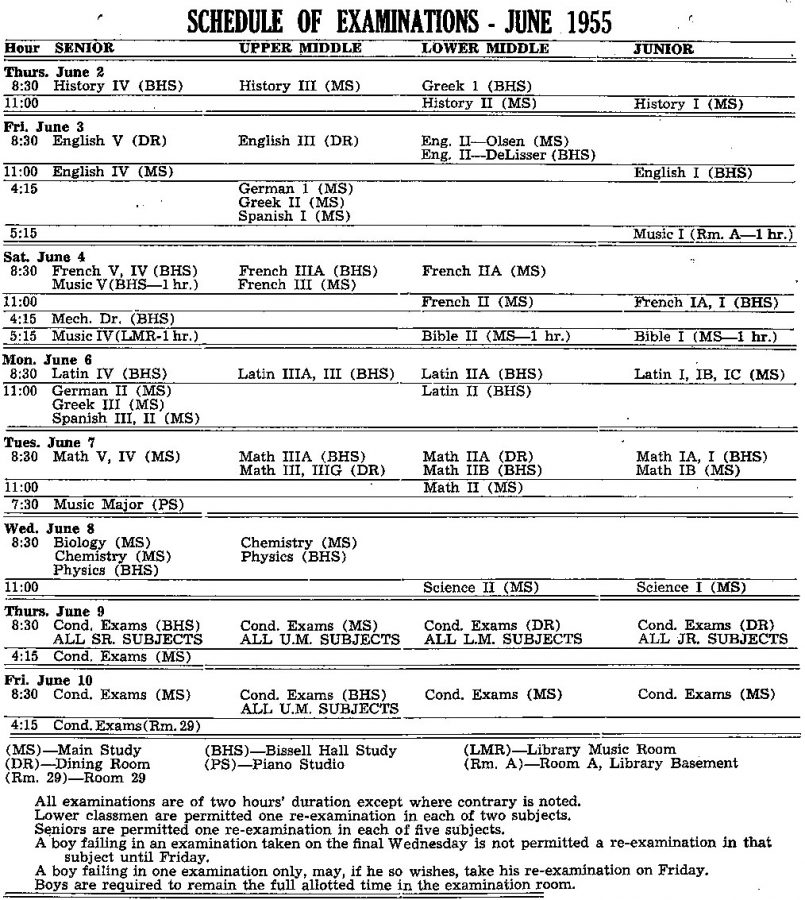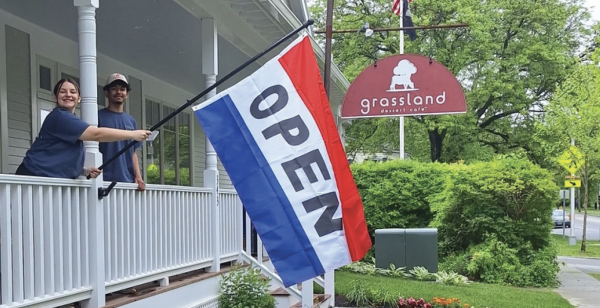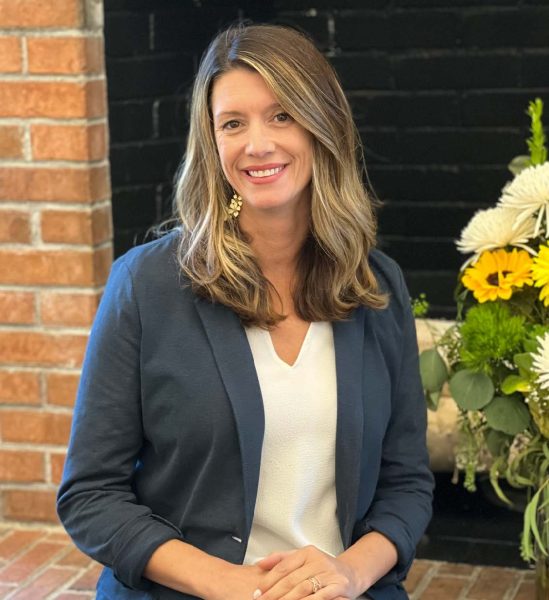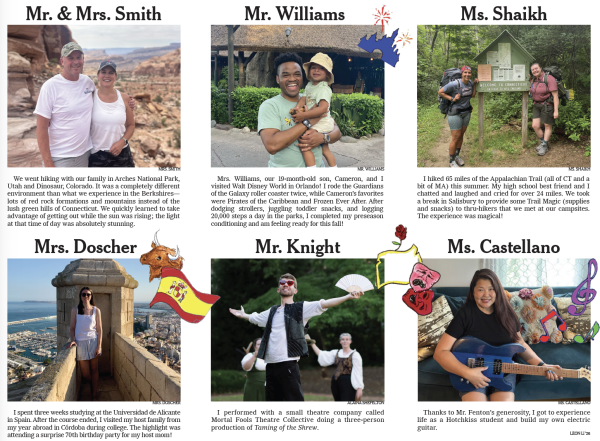One Step At A Time: A Look Inside the Curriculum Review
In an interview with Meghana Annamaneni ’21, Mr. Jared Hall, dean of academic life and instructor in history, describes the initiatives the Curriculum Review Committee is considering and how student voices are being incorporated into the curriculum reform.
What changes has the Curriculum Review Committee considered so far?
“They put together a report for faculty and for Mr. Bradley that had three major areas of recommendation – advanced studies, interdisciplinary courses, and diversity and inclusion. In the Spring, the main focus will be rethinking the schedule: the daily schedule, the weekly schedule, and the yearly schedule.”
How have surveys contributed to deciding what aspects of the school to reform?
“One survey that I know has been impactful is the Stamats survey [of alumni, faculty, parents, and other stakeholders]. I know that has been guiding conversations about the work. Even though we are [a school with more than] 90% [of students living on campus], the Stamats survey indicated a fairly low satisfaction rate about residential life at Hotchkiss. The schedule should reflect on what is important to us, and if residential life is important, we need to schedule time for residential-related activities.”
What parts of the Humanities program do you believe need to be improved?
“Structurally and organizationally, we have been tackling the Humanities program separat[ly] from the curriculum review. Work on the Humanities review started last spring. We know that in our process of review it is clear that there have been certain challenges that we need to rectify. Some of them go right to the structure, the core premises of the Humanities program. At the same time, there are some real strengths to the program. Depending on who the student is and the group of students they’ve been surrounded [with] over two years, some of these experiences are wonderful, and we don’t want to wreck that. One of the problems with the Humanities program is this question of diversity. The Humanities program was launched over ten years ago and was framed around the Enlightenment Project, which harkens back to something more common in the 1950’s than it is today, which is a history [of] Western civilization. In a world which is more globally interconnected [than] at any other time in the past, in a time when we are thinking critically about identity and who gets included in power structures, I think it’s fair to say that [this] narrative is not providing us the opportunities that we need for the discussions we need to be having. That probably means that we will be spending a little less time on things like the Bible or the religious distribution of the Swiss cantons. We want to create more space in the curriculum to go outside many students’ experiences, to go to places like China, Africa, and Latin America, in order to interact with ideas that are not currently part of the program. Another challenge with the Humanities program is that meeting twice a week for philosophy and religion is not a great structural model. It is adding up to be more work for students; conceptually it’s more homework and more essays. We want to consolidate a little bit, so that students will have three classes in Humanities instead of four.”
Is the Curriculum Review Committee focusing on giving more free time to students? If so, is it time for students to relax or time for students to meet with teachers for extra help?
“There was an experiment two years ago called consultation period [as] an opportunity for all those little meetings it seems like there’s never enough time for. What happened? Immediately, there was this land grab for [the time]. All of the different student clubs and review sessions were all organized for the same time, and students immediately felt the same pull during that time that they did at any other time. That was a really great metaphor for the overall problem that we have, of course; we want to give back more time for students and more time to contemplate and…plan and be intentional. The problem is that at a place like Hotchkiss, there is always more we could be doing. For many students, if you give them more time, they will fill it. I don’t know if there is going to be a solution to automatically give students more time. Is it possible to be more intentional about the schedule? Sure. I don’t think there’s going to be a silver bullet.”
Do you think the student body will take a lot of time to acclimate to the potential changes?
“I think most of the changes we are looking at are going to be implemented gradually with what I hope are really good communications with students, faculty, parents, and alumni. We don’t want to rush into anything; often when we are talking about changes, we are talking about a two- to four-year time frame. The hope is it won’t be super-challenging to acclimate to, because folks will know what’s coming, and it will happen in stages.”
How would you like students to participate in the curriculum review? What input would be most helpful?
“I’ve had a number of smaller-group conversations about diversity and inclusion. What I like about those is that those were spaces for me to hear things that were completely outside of what I was expecting to hear. For example, I had gone in thinking for the most part that the connections between disciplines were forced connections – that was my bias. It wasn’t until I had the chance to sit down with students to talk about diversity and inclusion that I understood a fair number of students see it quite the opposite. They value the interdisciplinary connections and don’t want them to go away. Small-group meetings are helpful, and I look forward to working with the student leadership on these programs. One idea that is loosely connected to the curriculum is study hall. Who is in study hall, how long should study hall be, [and] where should study hall take place? We have a working group that is looking at those things now, we’ve done surveys with teachers, and this week we will be reaching out to peer schools to see what they do. I think a logical [next] step in this process would be to reach out to students, as well, initially in smaller groups and then [in] larger groups in order to make folks feel like they are part of the decision-making process and [to] find the blind spots in our own decision-making process.”






